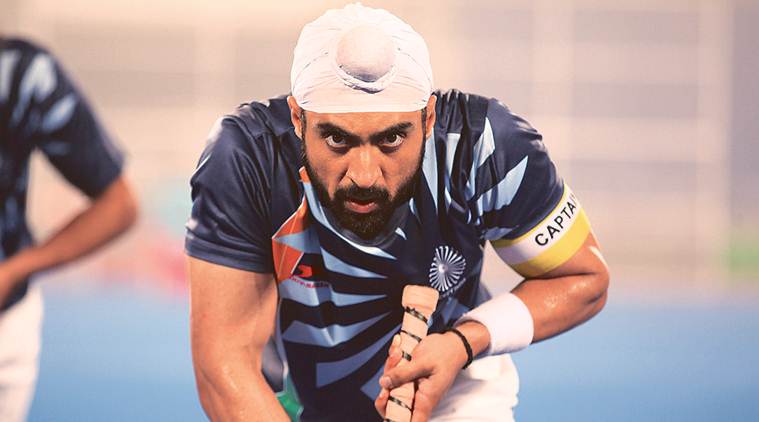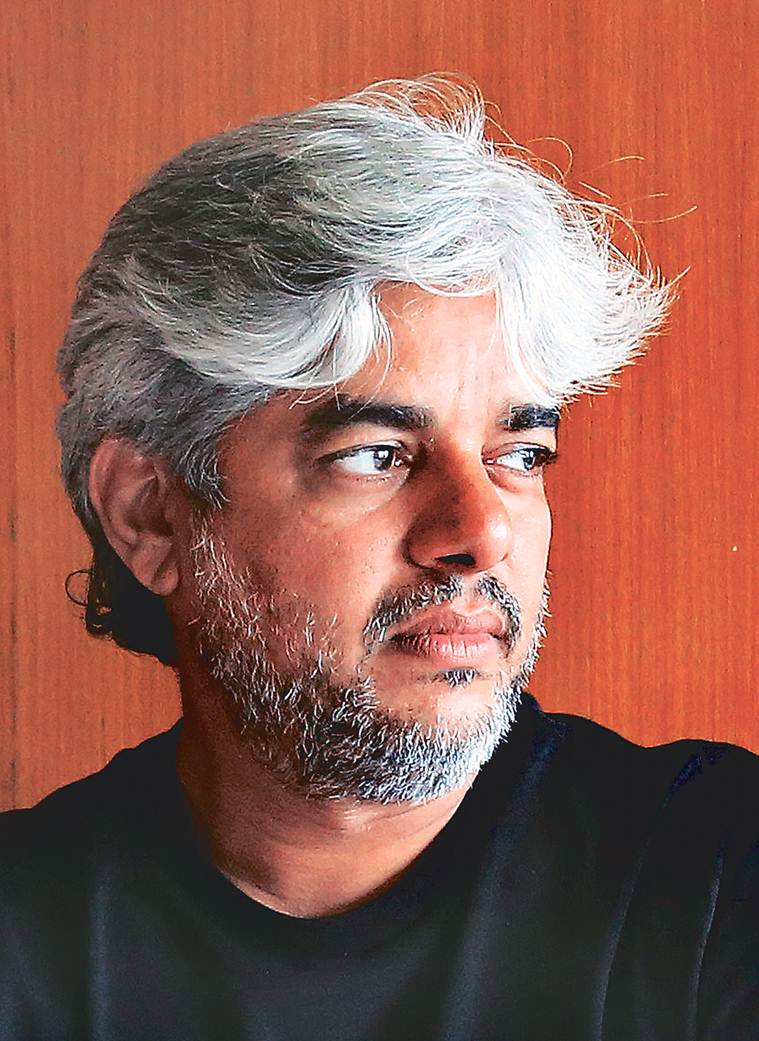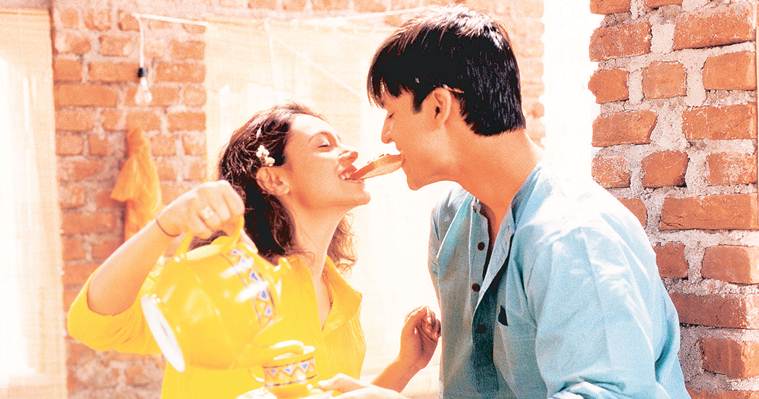I began by speaking to former Indian hockey team captain Sandeep Singh (who made his international debut in 2004, but was paralysed and wheelchair-bound for two years after being hit by an accidental gunshot in 2006, on a train, when he was on his way to join the national team which was leaving for the World Cup that year. He was made the captain of the national team in 2009 and under his leadership, India won the Sultan Azlan Shah Cup that year) and his elder brother Bikramjeet Singh, also a hockey player. I had received a handwritten essay from Sandeep (now aged 32), which he had given to Deepak Singh and Chitrangda Singh (co-producers of Soorma). After reading it, I told them that we should focus on developing this story. We decided on this before OK Jaanu’s release.

Before writing the script, I sat with Sandeep to understand his life. Both he and his brother came to Mumbai from Haryana. I travelled with them to their hometown, Shahabad (Markanda in Kurukshetra district). There, I spent time with their family. We drove together to Delhi. I went to all those places where he had played. I almost relived Sandeep’s life with him. That helped me understand what the screenplay should be. Then, Suyash Trivedi and I sat down to write it.
 Soorma director Shaad Ali.
Soorma director Shaad Ali.
How did Taapsee Pannu and Diljit Dosanjh train for their roles as hockey players?
I gave Bikramjeet and Sandeep the responsibility of training them. Even the actors who were cast as coaches in the film used to play hockey with them. All the players shown in the film are real-life hockey players.
How did you zero in on your lead cast?
Dosanjh was the first choice for the role of Sandeep. I had seen him in Punjab 1984 (2014) and liked his screen presence a lot, even when I watched him sing. With him, I thought, I don’t have to work on his appearance. And Taapsee comes from that world, a sardarni whose father had been a hockey player. The challenge was to keep the treatment close to reality. I chose actors who had natural Punjabi diction. I didn’t want to write a single Punjabi word for the film, yet, I wanted the actors to sound like Punjabis.
Soorma has a very different feel from your previous films.
Story continues below this ad
I hope so. I don’t want my films to look the same. I have tried to be honest and true to the world in which I am setting the film in. Each film comes with its own characters and ambience. Gradually, as a filmmaker, you polish your craft and have less of synthetic elements in it. A film makes you choose a certain aesthetic and think in a certain way. I had adopted one rule while making Soorma: that I would not go by whatever is my first instinct. It might echo what I have done earlier. I decided to go with the third or fourth instinct.
But OK Jaanu (2017) had a lot in common with Saathiya (2002).
These two films, both set in Mumbai, belong to the same family. Their DNA is the same, especially the courting and falling in love part. OK Jaanu (remake of Mani Ratnam’s OK Kanmani [2015]) is like a prequel to Saathiya. It’s vintage Mani sir.
You’ve been loyally assisting Mani Ratnam for years now.
Story continues below this ad
The first film I watched after I finished school was Roja (1992). I found it very refreshing and told my mother that I want to work with the director. Mani sir was not about to start any project at that time. Instead, he persuaded me to go to Mumbai and start working. Since I was not going to join college, I followed his advice and assisted Ketan Mehta. After Iruvar (1997) released, I again approached Mani sir. He was about to make his first Hindi project Dil Se.. (1998) and I joined him. Later, I remade his Alaipayuthey (2000) as Saathiya. Four days ago, I returned from a shoot in Serbia where Mani sir is making his next movie. I keep assisting him in all his movies.
What takes you back to his sets?
Him and the relationship that we share. We enjoy each other’s company. When I’m on his sets, I take over the shoot, and have a good time after. He is an all-round director. His influences will be there in me, yet it is very difficult to imitate him.
After Bunty Aur Babli’s (2005) success, did Jhoom Barabar Jhoom’s (2007) failure break your heart?
It is part of me. If a film does not get the response you hoped for, it disappoints you. However, I believe, a film gets the response it deserves.
The catchy music of your films has an afterlife.
Story continues below this ad
Music is my strength as well as weakness. This time with Soorma, I am being careful. I thought, maybe we tend to get carried away by music, so, composers Shankar-Ehsaan-Loy have tried to keep it realistic, barring one song-and-dance number.
 A still from Ali’s first film Saathiya, a Hindi remake of Ratnam’s Alaipayuthey.
A still from Ali’s first film Saathiya, a Hindi remake of Ratnam’s Alaipayuthey.
As the son of filmmaker Muzaffar Ali and CPM leader and former member of Parliament Subhashini Ali, you must have been exposed both to the worlds of cinema and politics. What made you choose cinema?
I was equally exposed to both the worlds. The initial experience of the dubbing studios and editing rooms sucked me into cinema. I was there on all of my father’s film sets, including Gaman (1978), Umrao Jaan (1981) and Aagaman (1982), as they were shot during my holidays. I remember Dil cheez kya hai being shot in Mehboob Studios. I was around six years old and I attended all the song recordings of Umrao Jaan. I remember watching the big orchestra recording with Asha Bhosle singing. Later, I worked with my father on a couple of television shows, such as Husn-e-Jaana. I wanted to be an actor initially, but after watching my father at work, I decided to be behind the camera.
Of late, there have been movies and shows on the Indian National Army (INA). As the late INA leader Lakshmi Sahgal’s grandson, haven’t you thought of making something too?
Story continues below this ad
I have been thinking about it for the last 20 years. I am now ready to tell that story and we are in the process of writing the script. However, I am not a disciplined writer and need a professional to collaborate with me on this and stay objective.

 Diljit Dosanjh starrer Soorma hits the screens on July 13.
Diljit Dosanjh starrer Soorma hits the screens on July 13.
 Soorma director Shaad Ali.
Soorma director Shaad Ali. A still from Ali’s first film Saathiya, a Hindi remake of Ratnam’s Alaipayuthey.
A still from Ali’s first film Saathiya, a Hindi remake of Ratnam’s Alaipayuthey.




























